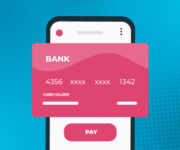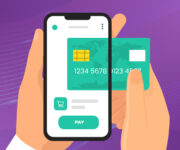It’s no secret that credit cards have faced a fair share of problems in the past few years. The global recession caused many people to tighten their belts, and credit card companies were some of the first to feel the pinch. Fees increased, interest rates rose, and many people found themselves struggling to keep up with their payments.
As we are trying to overcome the recession, new threats are on the horizon for the credit card industry. One of the biggest is the rise of virtual credit cards. Most people have heard of them, but few understand how they work or why they’re becoming popular. So, let’s take a closer look at this new technology and what it could mean for the future of credit cards.
What Are Virtual Credit Cards and How Do They Work?
A virtual credit card is a credit card that exists only in cyberspace. It’s not a physical piece of plastic you can carry around in your wallet. Instead, when you sign up for a virtual credit card, you’re actually getting a credit card number, expiration date, and security code that’s different from your regular credit card.
Almost all Fintech companies have been issuing virtual credit cards to their customers. You can use it to make purchases online or over the phone and set up recurring payments. Not only that, but you can also use virtual credit cards to shop anywhere the BNPL model is accepted.
Why Are Virtual Credit Cards Becoming So Popular?
You might be wondering why virtual credit cards are becoming so popular. After all, we’ve been using physical credit cards for decades now.
So, what’s the big deal? There are a few reasons why virtual credit cards are starting to gain steam. Let’s take a look at some of the most important ones:
1. Much Larger Acceptance for Payments
One of the main reasons why these digital cards are gaining popularity is that they can be used for payments almost anywhere. Physical credit cards offered by banks use Master-Visa Payment rails. However, virtual cards use UPI, which is widely accepted for P2P and P2M payments in India.
With this, you can make payments to anyone with a UPI-enabled bank account using their unique virtual ID.
2. Security Concerns Are Driving People to Virtual Credit Cards
In recent years, we’ve seen several high-profile data breaches that have affected millions of people. As a result, people are becoming increasingly concerned about the security of their personal information. And for a good reason!
Digital cards are much more secure than traditional credit cards. With a virtual credit card, your information is stored on a secure server instead of in your wallet, where it could be lost or stolen. The MPIN serves as a safety check even if the phone is stolen. It’s no wonder that people are gravitating toward virtual credit cards for their security.
3. Easier Buy Now, Pay Later (BNPL) Options
One of the most popular uses for virtual credit cards is Buy Now, Pay Later (BNPL) services. These services allow you to make a purchase and spread the cost over a period of time. They’re becoming increasingly popular, especially with millennials.
Virtual credit cards make it easy to sign up for BNPL services because you don’t have to share your credit information with these organisations. Also, the younger generation doesn’t have a viable credit history, in most cases, which limits their ability to use physical credit cards. So, virtual credit cards give them a way to make purchases and build up their credit score in the form of BNPL.
4. Faster Approval Rates Without a Credit Check
While physical credit cards require a credit check, virtual credit cards do not. This is because virtual credit cards are issued by fintech companies, not banks. So, they’re not subject to the same regulations. This makes virtual credit cards much easier to obtain.
Also, applying for a credit card is a lengthy process. You have to fill out an application, wait for a credit check, and then wait for the card to be delivered. With a virtual credit card, you can get approved within a period of 24-48 hours which is a huge time saver.
Will Physical Credit Cards Eventually Become Obsolete?
Due to legacy business models, underwriting methods, and high operational costs, current credit cards only serve 30 million salaried employees. On the other hand, India has 940 million debit card users and over 450 million PAN card holders with some credit history that can be serviced with digital cards.
However, it will take time for virtual credit cards to take over the market completely. That’s because people are creatures of habit, and change doesn’t come easy. Also, credit cards do have the advantage of significantly higher card acceptance at merchants worldwide. Visa and Mastercard have established a truly global point of sale and online payment ecosystem, with their cards accepted by millions of merchants worldwide.
It will take time, but eventually, people will see the advantages of virtual credit cards over traditional credit cards. And when that happens, we could see a complete shift in how people pay for things.
However, the Master-Visa payment ecosystem is still the go-between two transactions in some cases, so it may be a long time before we see the death of the physical credit card.
How Can Fintechs Better Manage Risk in a Digital World?
Fintechs are playing an increasingly important role in the financial services industry. They’re offering innovative products and services, such as virtual cards, to make it easier for consumers. But as they become more entrenched in the industry, they also face new risks.
Finezza provides a wide range of products to financial institutions such as banks, NBFCs, and other lenders. It tracks and manages credit applications, expedites the processing of KYC documents, and streamlines the lending process. This helps identify loan defaulters and minimise risks.
So if you want to make better financial decisions faster, contact us right away!




Leave a Reply